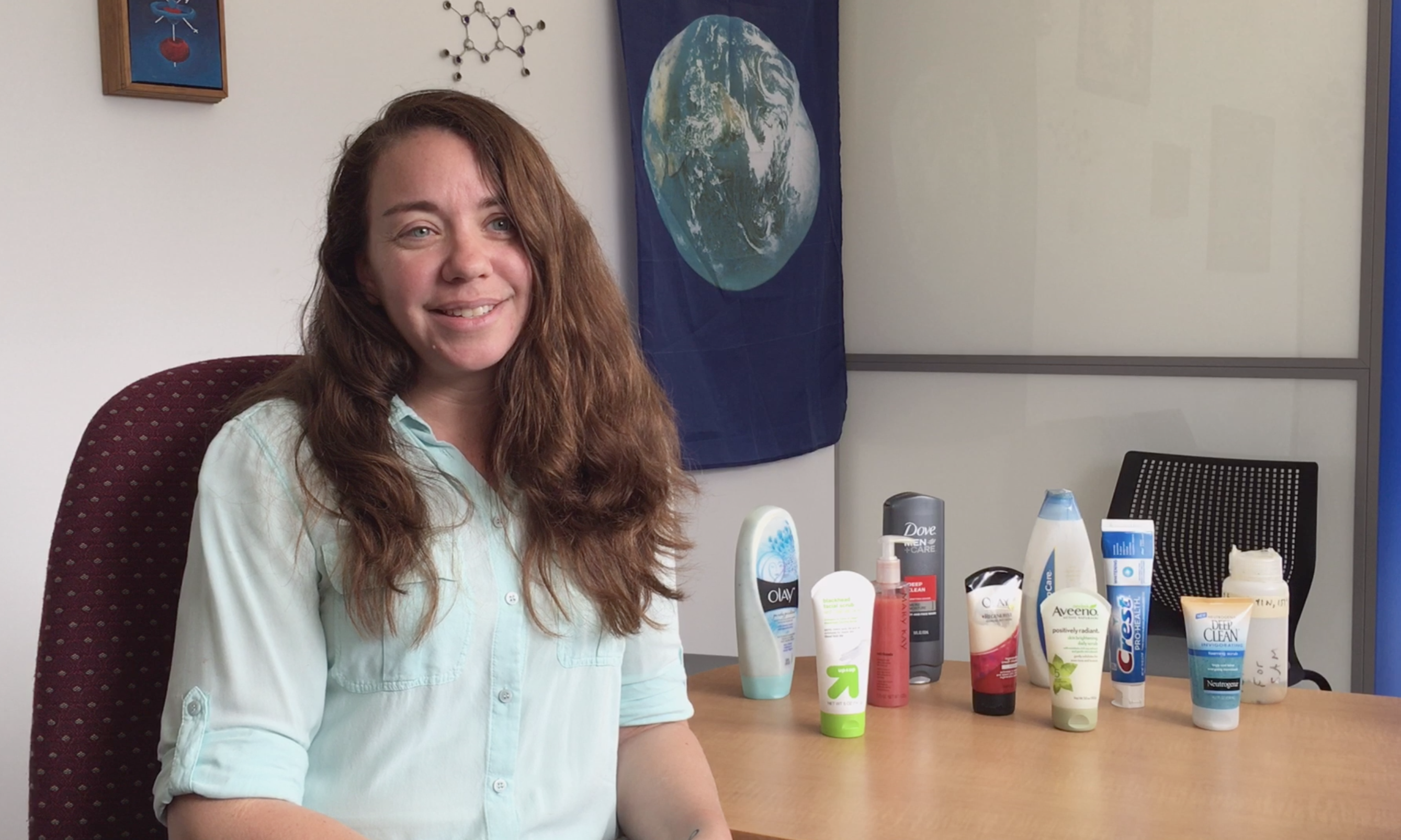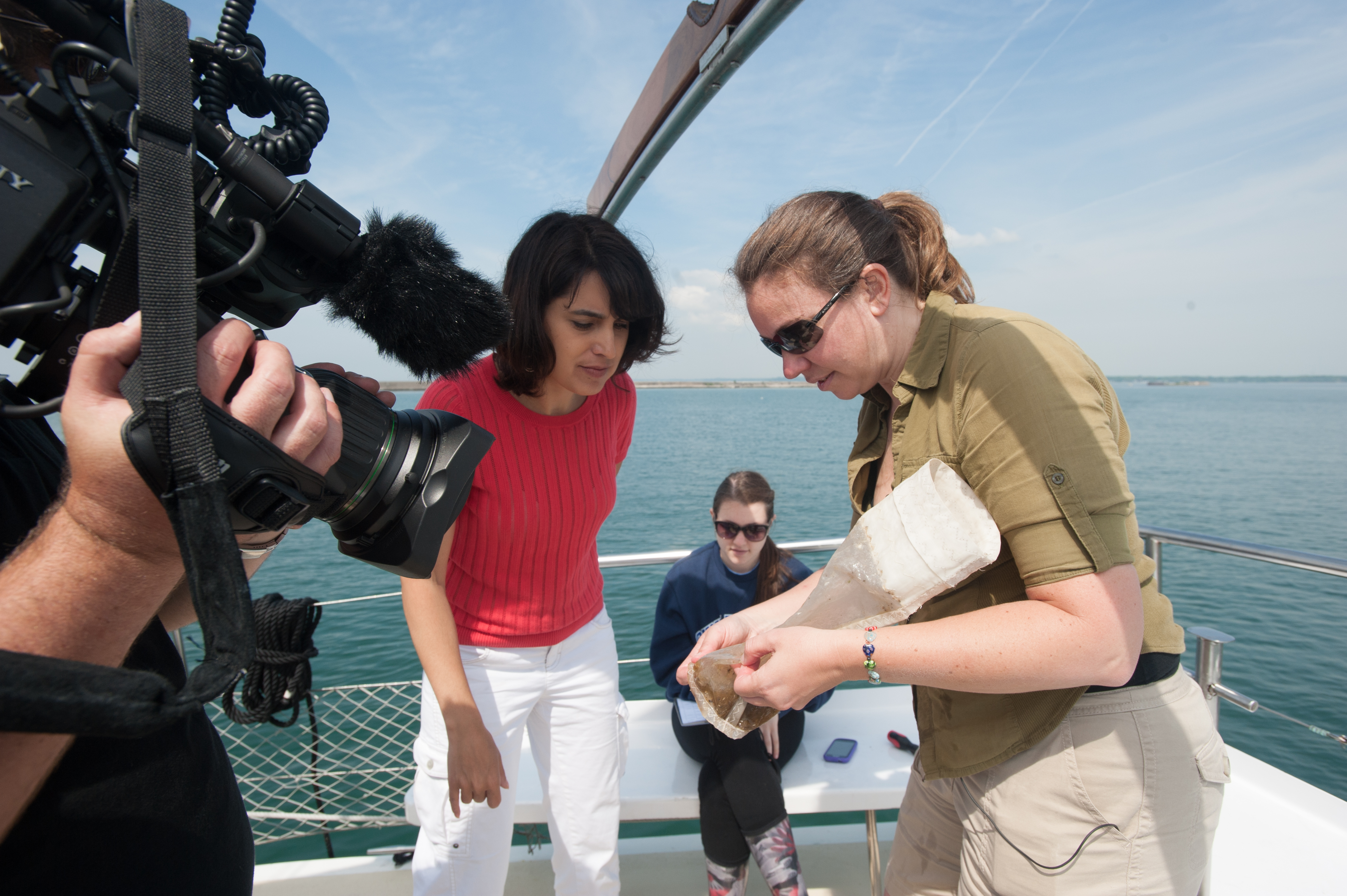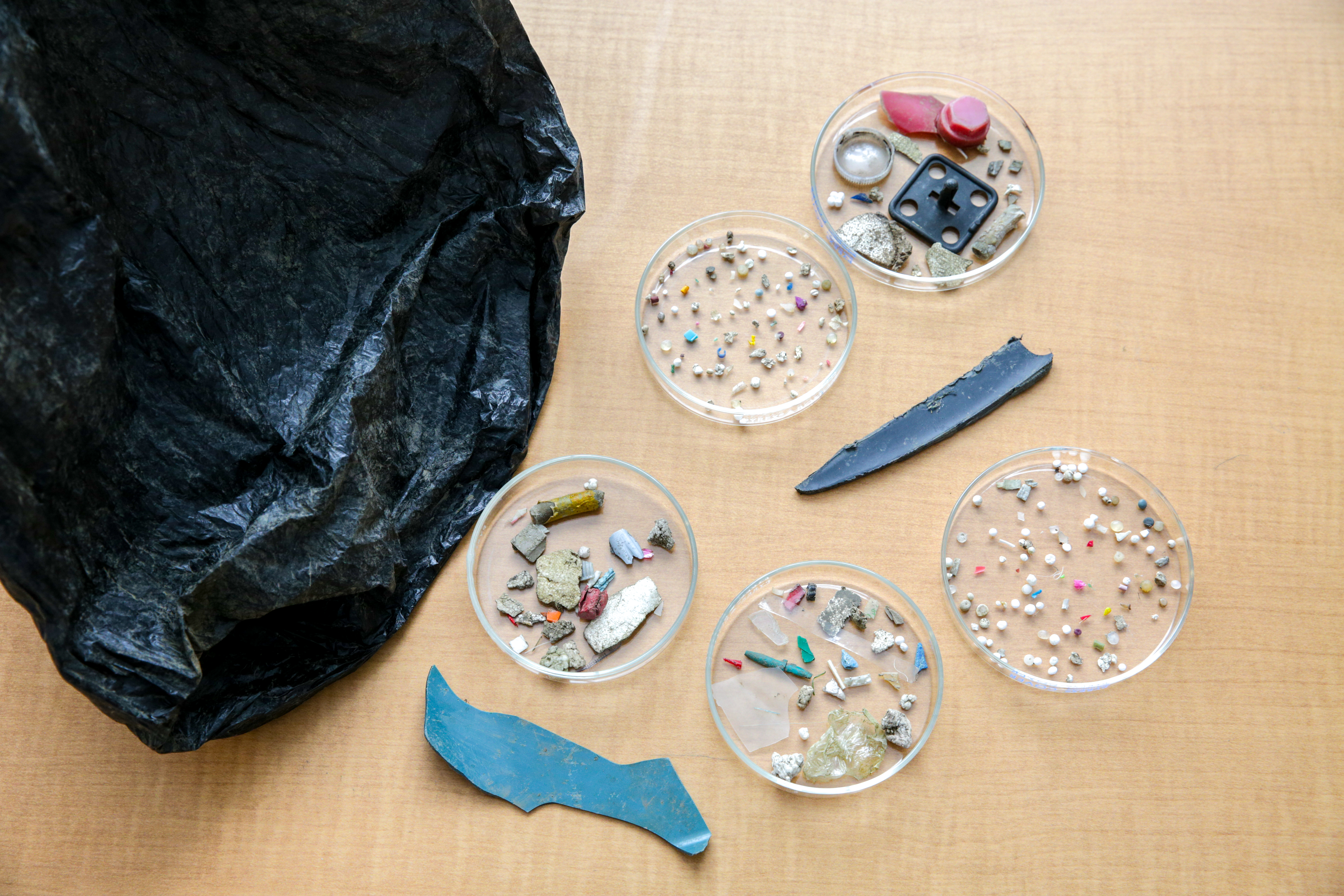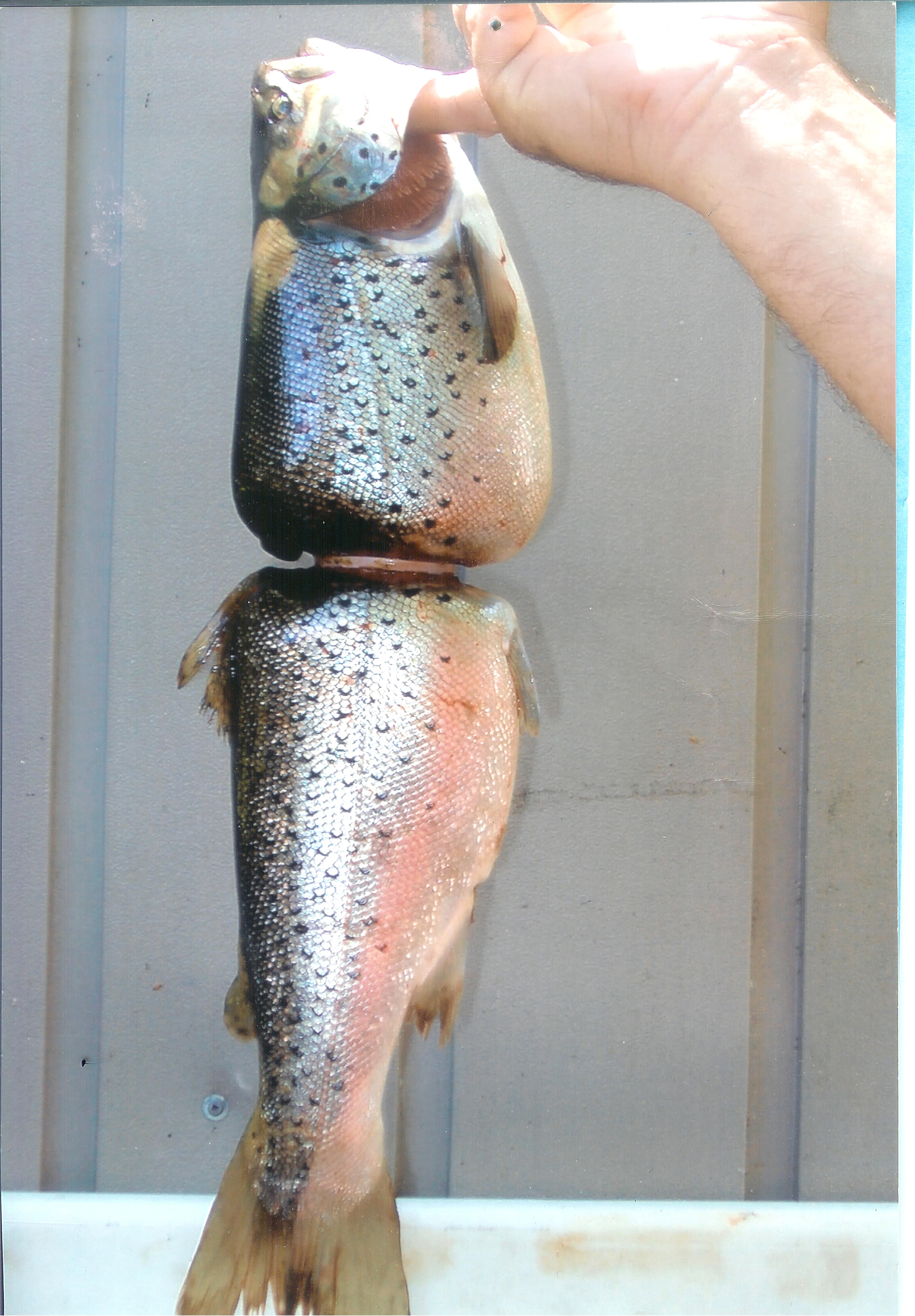A Conversation with Microplastic Researcher Dr. Sherri “Sam” Mason

Plastic is strong, lightweight, flexible, and versatile, but at what cost? It is predicted that by 2050, plastic litter will outweigh fish in the ocean. Since World War II necessitated an expansion of the plastic industry, plastic use has been increasing at an exponential rate.
It is now found everywhere, including in our air, soil, homes, oceans, and now, as one researcher discovers, in the largest body of freshwater in the world, the Great Lakes.
Dr. Sherri “Sam” Mason is the current Sustainability Coordinator at Penn State Behrend. As a Professor of Chemistry at SUNY Fredonia, Mason led a research group in the first study of the prevalence and impact of plastic pollution within the Great Lakes and freshwater systems. As a leader for change and advocate for sustainability, her work formed the basis of the creation of the Microbead-Free Waters Act. Passed into law by Congress in 2015, this act prohibits the manufacturing, packaging, and distribution of rinse-off cosmetics containing plastic microbeads. As this leader for change, Dr. Mason is highlighting the importance of environmental conservation through conversation.
To explain the phenomenon of the exponential increase in plastic use, Mason explains how it “really came about from this kind of change in mindset from one of reusing things to one of convenience and disposability... a lot of plastic products are these things that people use on the go. It's the ‘drive thru culture’...You see evidence of this in advertisements about how ‘plastics make things possible’...And so there is this dramatic increase in its prominence and its use in our society as a result of that.”
Through her work, Mason researches plastic prevalence in the Great Lakes to advocate for awareness of microplastics as a growing problem to our environment and health. She describes the process of embarking on this research journey nearly a decade ago. “I was actually sailing on the Great Lakes and had this thought. ‘As much as we know about plastic pollution in the oceans, what do we know about it in freshwater?’ So I came back and did a literature review and found that here was just nothing out there. Here, I'm living on the largest freshwater ecosystem in the entire planet. So to me, as a scientist, I just thought, ‘Wow, I am living next to the best laboratory that has ever existed. If you want to know about plastic pollution and freshwater, this is the place to be and I already live here’. So our work started by looking for plastic within all five of the Great Lakes...From there, we've looked upstream. So we've looked at tributaries that go into the Great Lakes, we've looked at organisms, namely fish, but also some planktonic organisms. Then we've looked at things that people ingest, tap water, bottled water, beer, sea salt. And everywhere we look, we find plastic.”
The results that Mason and her research team found were astonishing. In 2012, they conducted an investigation on samples of the surface waters of Lakes Superior, Huron, and Erie and found that about 80 percent of the plastics collected from these samples were less than 1 millimeter in size, known as microplastics, with Lake Erie’s surface having the highest density of these plastics at 80,000 particles of microplastic per km2. Additionally, many of these microplastic particles were multi-colored spheres, which Mason suspected came from consumer products. It was found that facial cleansers contained microplastic particles of similar size, shape, texture and composition.
With this, Mason emphasized the idea that “every piece of plastic that I find in the environment ultimately comes from us.”
To elaborate on why this discovery is a problem, Mason stated that it is because plastics contain a variety of toxic chemicals, including flame retardants and antimicrobial compounds, as well as take in toxic contaminants from surrounding water.
Additionally, if organisms within this water unknowingly ingest this plastic, their stomachs fill until they starve to death, which has a detrimental impact on marine ecosystems and our food supply.
When asked about how this microplastic reaches our Great Lakes, Mason describes how “The problem is that it lasts forever. You know, it's incredibly resilient. So the same features that make it so attractive on kind of the industrial side, are exactly the issue when it comes to the environment..it doesn’t biodegrade…[for example,] a plastic bag [on the side of the road], come back next year, come back in five years, come back in 10 years, and if it hasn't blown away, it's still going to be there. Come back in 50 years, it's still gonna be there. That's how resilient this material is. So it just continues to be....A car drives over it or the wind blows it and it breaks into these smaller and smaller pieces, but it's still plastic and the properties of it still are plastic...it never goes away.”
If someone was interested in limiting their plastic use, but was not sure where to begin, Mason recommends to “just identify one thing... Don't try and change your whole life overnight. Don't go home and throw everything in your house out and try and start all over again... Once you're like ‘okay, I've gotten used to this habit,’... [then ask] ‘now what am I going to do?”
With this small step method, Mason believes, “That's how you create change in yourself...you don't have to be on the TEDx stage to have that happen. It can happen just by going to the grocery store and bringing your reusable bags with you, or being at a restaurant and saying, ‘No, I don't need that straw.’”
Despite the negative impacts our plastic use has had on the Great Lakes, Mason remains optimistic about our ability to change our habits for the better. “The change that you make affects the world around you.” says Mason. “If people use less plastic, then guess what, when I'm out sampling the water, I'm gonna find less plastic. That's just how it's going to work…[We must] really empower people to be part of that and to not feel overwhelmed by it. The motto I actually live by is from Mahatma Gandhi, who said ‘Be the change you wish to see in the world’. That's really what I encourage people to do. If something in the world is bothering you, then change it.”
Listen to the interview: Audio of Interview with Dr. Sherri Mason



